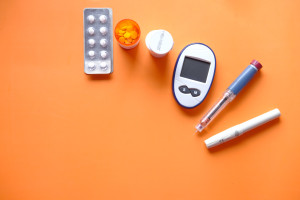Introduction
Welcome to the third installment of our journey through the world of diabetes prevention and care. In our previous discussions, we uncovered the root causes and far-reaching effects of type 2 diabetes. Now, it’s time to explore the strategies that can potentially reverse or even “cure” this disease. To achieve this, we’ll confront diabetes on two fronts – by re-evaluating our carbohydrate intake and embracing the power of time-restricted eating.
Empowering Tools for Diabetes Care
Before we delve into the details, let’s arm ourselves with two essential tools that can significantly aid in managing diabetes: a glucose monitor and a nutrition-tracking app like Cronometer or My Fitness Pal. You can easily find a glucose monitor kit at your local Travelers Rest store for around $40. Ensure that you acquire the monitor, test strips, and lancets for blood sugar testing. These tools will provide valuable insights into your blood glucose levels.
A word of caution: If you are an insulin-dependent type 2 diabetic, please consult with your healthcare provider before implementing the recommendations below.

Carbohydrate Management
One of the most potent strategies for managing type 2 diabetes is to limit your daily carbohydrate intake. However, it’s not just about cutting carbs; it’s about making smarter choices. Consider getting your carbohydrates primarily from fruits and vegetables, while avoiding grains and beans. Tracking your carbohydrate intake using apps like Cronometer or My Fitness Pal can be enlightening. Many people are unaware of just how many carbohydrates they consume daily until they start monitoring them closely.
It’s important to note that carbohydrate needs vary from person to person. Athletes, for instance, require more carbohydrates than those with a sedentary lifestyle. The key is to tailor your carbohydrate intake to your individual needs, and tracking can help you find that sweet spot for local care.

Time-Restricted Eating (Intermittent Fasting)
Time-restricted eating, often referred to as intermittent fasting, is a powerful and cost-effective tool that can become a seamless part of your lifestyle. It trains your body to tap into stored fat for energy, a key factor in diabetes management. The best way to start is by extending the time between your last meal of the day and breakfast. For instance, if your last meal is at 6 PM (avoid late-night snacking) and you break your fast at 8 AM, you’ve already fasted for 14 hours.
One popular fasting practice is the 18:6 method, where you fast for 18 hours and have a 6-hour eating window. You can begin with this approach just one day a week and gradually incorporate more fasting days as you become more comfortable. The possibilities are endless when it comes to intermittent fasting; you can even experiment with occasional 24- or 48-hour fasts. However, it’s crucial to break your fast with healthy food choices to reap the maximum benefits.
Conclusion
In the quest to prevent and manage type 2 diabetes, a holistic approach that combines smart carbohydrate management with time-restricted eating can yield remarkable results. By using tools like a glucose monitor and a nutrition-tracking app, you’ll gain valuable insights into your health. Remember, your journey to better health is a personalized one, so consult with your healthcare provider and tailor these strategies to your unique needs and circumstances. Together, we can take significant steps toward a brighter, diabetes-free future with the help of chiropractic care and functional medicine.
Interested in partnering with a local functional medicine provider in Travelers Rest, SC? Look no further! Book your appointment TODAY with Dr. Chris at Life Balance Wellness!
